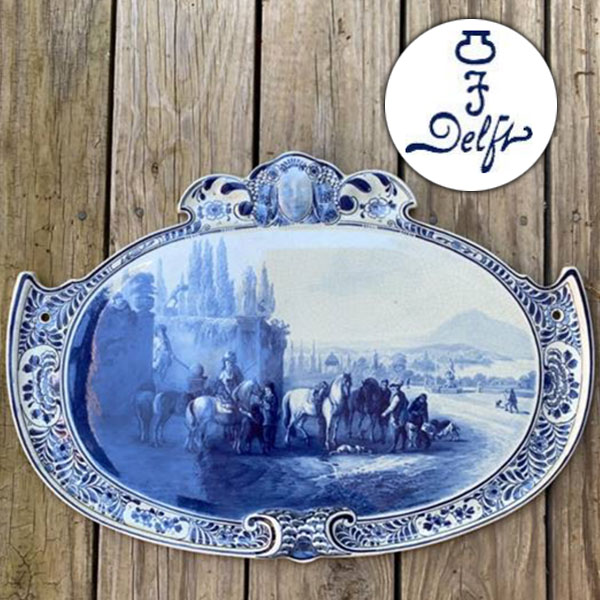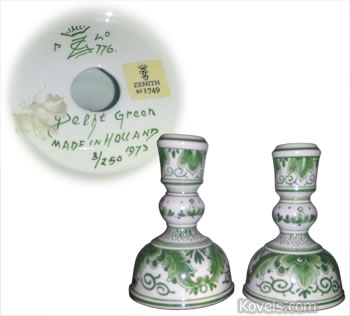Joost Thooft Plaque
Q: I’m curious about the worth of this piece. It’s a hanging platter or plaque. It seems rather unusual. The top has a sculpted face. It has a painted “Delft” mark and is embossed “Joost Thooft & Labouchere.” Is there a way for you to estimate its worth from photos?
A: This trademark pictures a vase or jar over the initials “JT” and “Delft.” The jar trademark was first used in the late 17th century by De Porceleyne Fles (The Porcelain Jar), an earthenware factory in Delft founded in 1653. Pieces were hand-painted at first but were being mass produced by the late 1800s. There were several changes in ownership. Joost Thooft bought the factory in 1876 and began making hand-painted ware again. He added his initials and “Delft” to the jar mark in 1879. Abel Labouchere joined the company in 1881 and became an associate in 1884. He took over the company after Thooft died in 1890. The company was granted the right to use “Koninklijke” (Royal) in its name in 1919. Koninklijke Porceleyne Fles, also known as Royal Delft, is still in business making blue Delft. Each piece is coded with the factory mark, an item number, the painter’s initials, and a date code consisting of one or two letters. There are sites online that list the date letter codes. A pair of plaques shaped like yours, but with different scenes, sold at auction for $1,000 this year.


